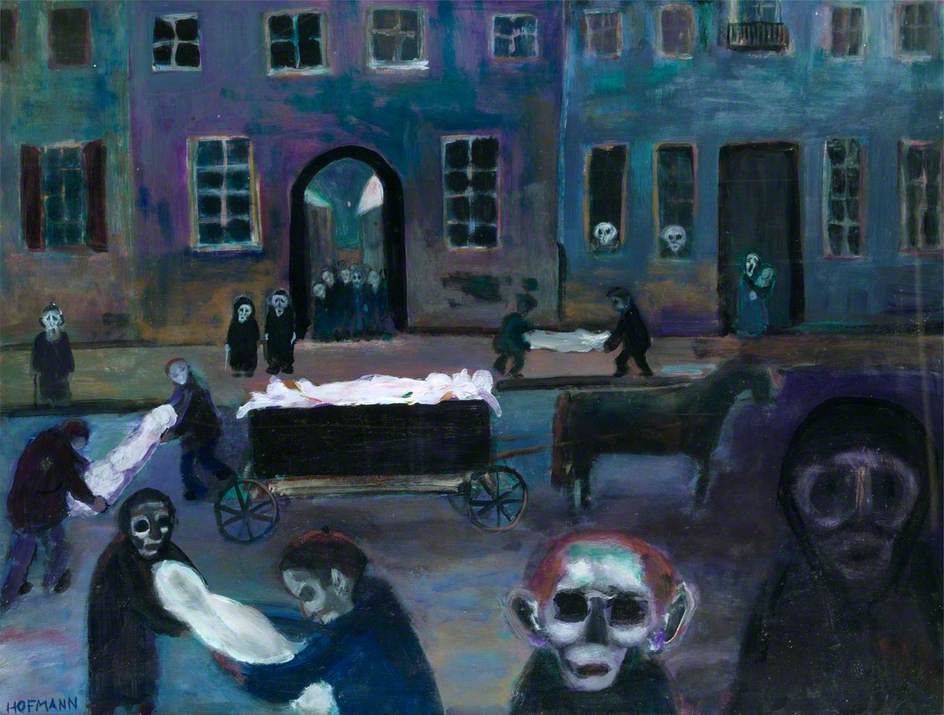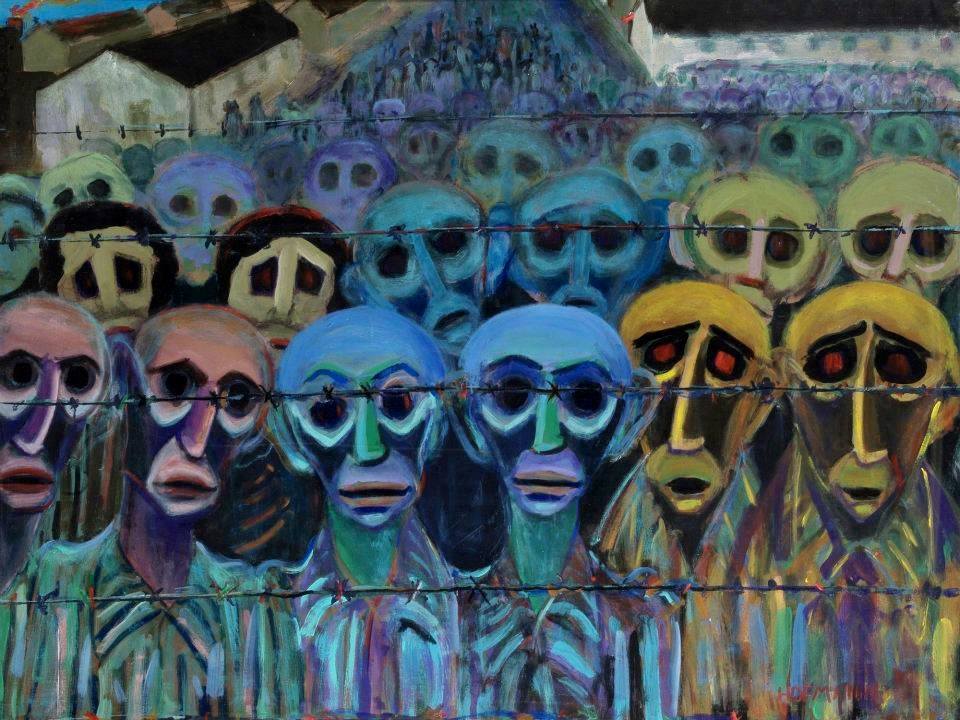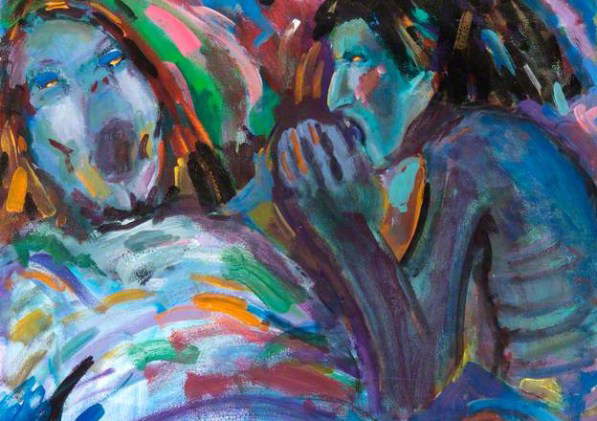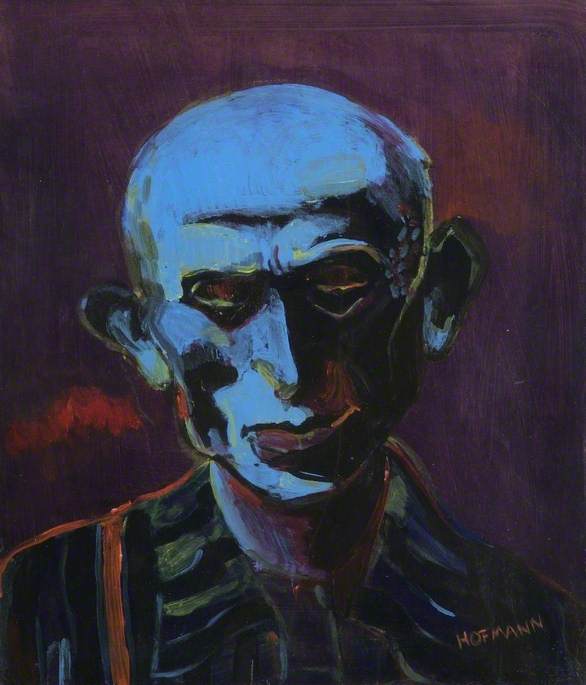It is not easy to live as a survivor of concentration camps: when your eyes and mind are filled with tragedy, brutality and death, certain images will stay with you for the rest of your life, living in your memory even long afterwards. Of course, those who managed to survive one of the most terrible moments in history, with racial persecution, deportation, concentration camps, fears and sufferings and everything related to the Shoah, probably experienced a feeling of relief and fleeting joy even if only for a moment, but then the mind flashes before one’s eyes again all that one has experienced, seen and felt, as an indelible mark, and then even that little bit of joy vanishes. Forever.
This is how Edith Birkin (Prague, 1927 - Hereford, 2018), a Jewish survivor of the Auschwitz concentration camp who was liberated in Bergen Belsen and later became an artist, recounts the moment of liberation: “All around you was dirt, lice, smell and death, and you just waited for the war to end, that’s what we were doing. One day we were standing, standing, and no Germans were coming, and then we found out that all the Germans were gone. A couple of days later the British came, the tanks were going down a kind of main road, but I was so weak that I couldn’t even go and greet them; most of us couldn’t go and greet them, because we were so weak and tired. I was so happy that I could just lie down and sleep. We always imagined that when we were released we would dance and kiss them-I don’t think they wanted to be kissed by us to be honest! We didn’t think we were so horrible, but we looked absolutely horrible to them, of course. And we would hug them and-we would be happy and dance, and God knows what, but all we wanted to do was lie down and be able to get sick.”
Born in Prague in 1927, Edith Birkin was deported to the ghetto in Åódź, Poland, in 1941 along with her family, but her parents died after a short time. The ghetto in Åódź, in German-occupied Poland, was the second largest after Warsaw, designated for Jews and Gypsies. Three years later, in 1944, she was deported to Auschwitz concentration camp, where she worked in a munitions factory. “Auschwitz was very frightening, because there were so many Germans there,” she recalls. “Discipline, very strict discipline. This feeling of death, all those people going to the gas chambers. It was a very strange, mysterious place. Every day there was this atmosphere of death. You could smell people being burned: you could always smell that smell-it was like boiled glue. The bones tasted like glue.” In January 1945 she survived a snowy death march to the camp in Flossenberg, Germany, and in March of that year she was transported on a cattle car to Bergen Belsen, where she was later liberated.
She returned to Prague, but none of her family and friends were still alive; she was left with only an older sister living in England.
“I was wandering around Prague and I felt desperately lonely, because suddenly I realized there was no one there,” Birkin says. “There was an office in Prague with lists and lists of people coming back. I went to see these lists every day, hoping someone would come back, but no one from the family came back. I remember walking around Prague devastated, and I realized that I was alone in the world, that I didn’t know anyone. I think it was really the worst time of the war. Although we had been liberated, it was the worst time because we realized and I realized that no one would come back, and life would never be the same, and what I hoped would happen after the war would never happen. The hope was gone. Because up until then you had the hope of the existence of a small group of people who knew each other, a relative, friends, and you would start life again in a community; get married, have children, and... you know, move on. But there was absolutely no one I knew.”
In the 1970s he began to study painting and found work as a teacher. He began making a long series of artworks in about 1983, centered on Holocaust memories. In fact, her paintings depicted the saddest and most terrible scenes she herself had experienced: the death march, people like herself locked inside a concentration camp, goodbyes.
 |
| Edith Birkin, Death Cart - Åód&zacute Ghetto; (1980-1982; 71.2 x 91.4 cm; London, Imperial War Museum) |
 |
| Edith Birkin, A camp of twins - Auschwitz (1980-1982; 71.2 x 91.4 cm; London, Imperial War Museum) |
 |
| Edith Birkin, The Last Breath - Gas Chamber (1980-1982; 50.8 x 60.9 cm; London, Imperial War Museum) |
 |
| Edith Birkin, Liberation Day (1980-1982; 53.3 x 45.7 cm; London, Imperial War Museum) |
In addition to putting her memoirs and Holocaust experience on canvas, she also published a book of illustrated poems, titled The Last Salute, and a novel titled Unshed Tears.
He regarded his art as “an expression of a sense of loneliness and isolation that many have experienced.” In his Cart of Death - Ghetto of Åódź , which belongs to the collections of theImperial War Museum in London, the artist depicted people carrying bodies wrapped in white cloths to load them onto a horse-drawn cart in the middle of the street, other people watching from windows or at the doorway, and all of them looking like skeletons, with empty eye sockets, moving in a diffuse bluish-gray atmosphere.
In the same collections, A Camp of Twins - Auschwitz: endless rows of imprisoned Jews are behind the barbed wire of a concentration camp; the prisoners are depicted in pairs of twins, but they are actually all similar, hairless, with hollowed-out faces and empty eye sockets. The twins in the painting were described by Edith Birkin in a 1983 interview with these words, “Each pair of twins stood together looking through the barbed wire”; they were people she had actually seen when she was a prisoner in the Auschwitz camp, in a space separate from the rest.
And again, in TheLast Breath - Gas Chamber, a work of immense drama, two women are depicted, in an abstract style and in a variety of colors, appearing destroyed as they try to breathe, their mouths wide open and their eyes staring; their last breath before they suffocate to death. Finally, also in Liberation Day a prisoner from the Auschwitz concentration camp is portrayed as the living dead: clean-shaven, with a hollowed-out face and a typical striped uniform.
Works that retrace places and situations of the Holocaust that the artist experienced firsthand and are pictorial testimonies of a survivor, whose mind has kept well imprinted throughout her life scenes of great suffering and tragedy.
Warning: the translation into English of the original Italian article was created using automatic tools. We undertake to review all articles, but we do not guarantee the total absence of inaccuracies in the translation due to the program. You can find the original by clicking on the ITA button. If you find any mistake,please contact us.